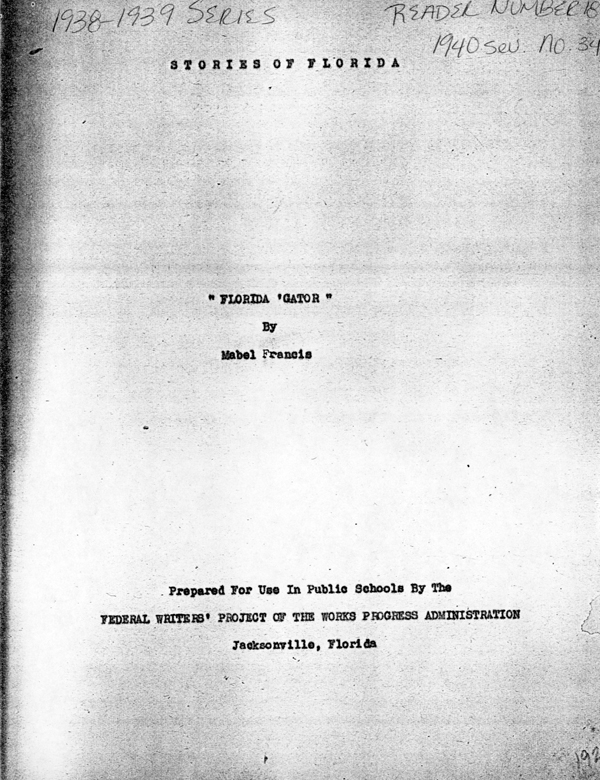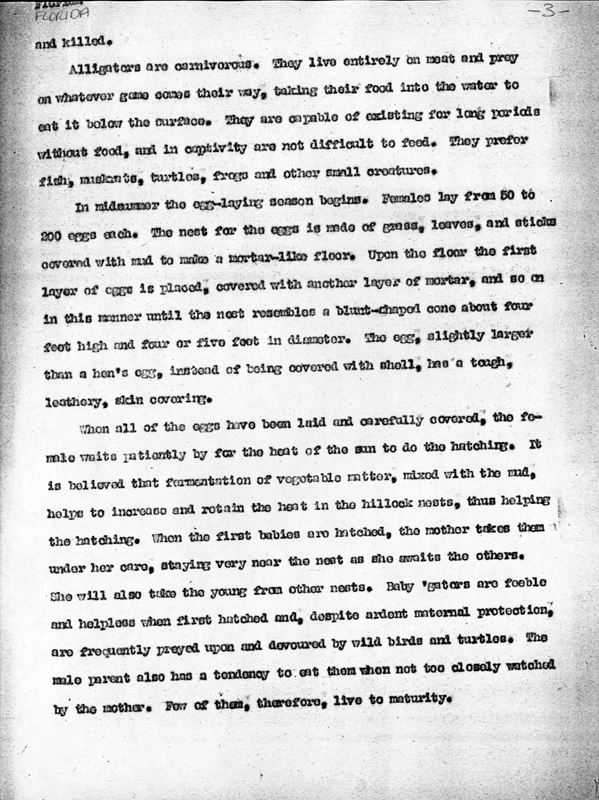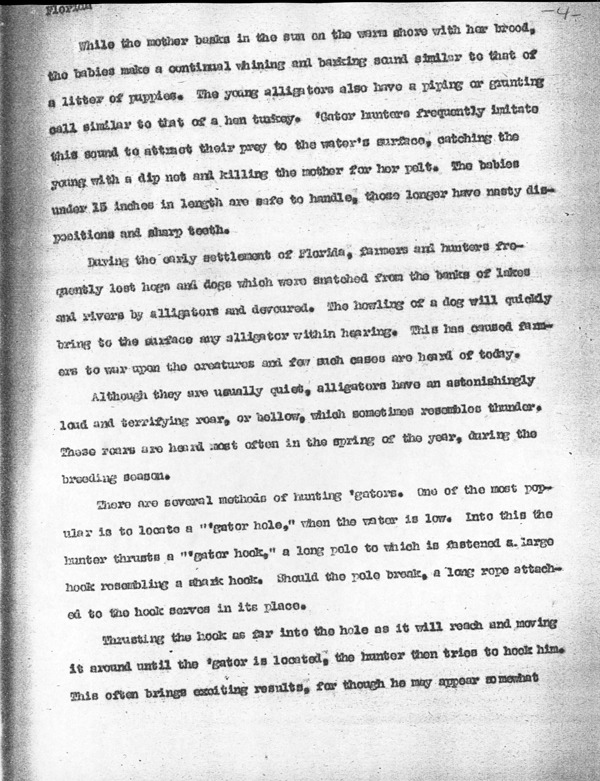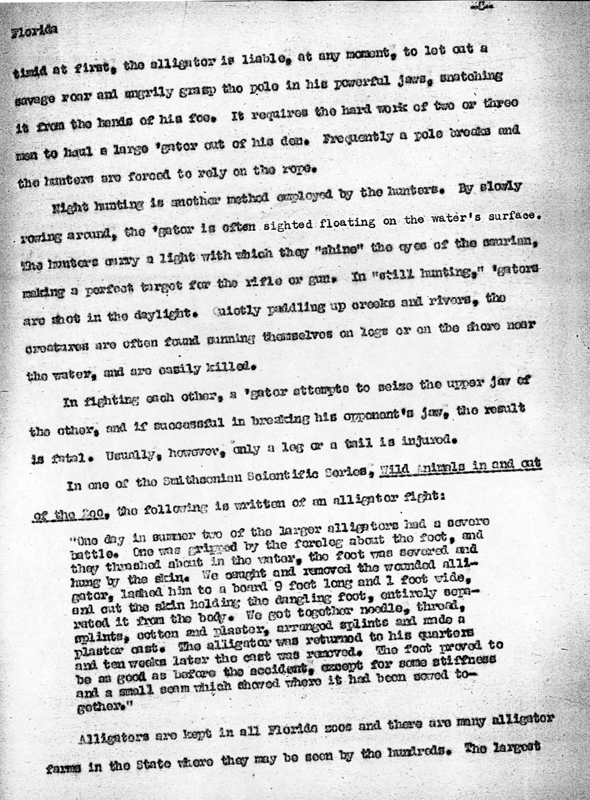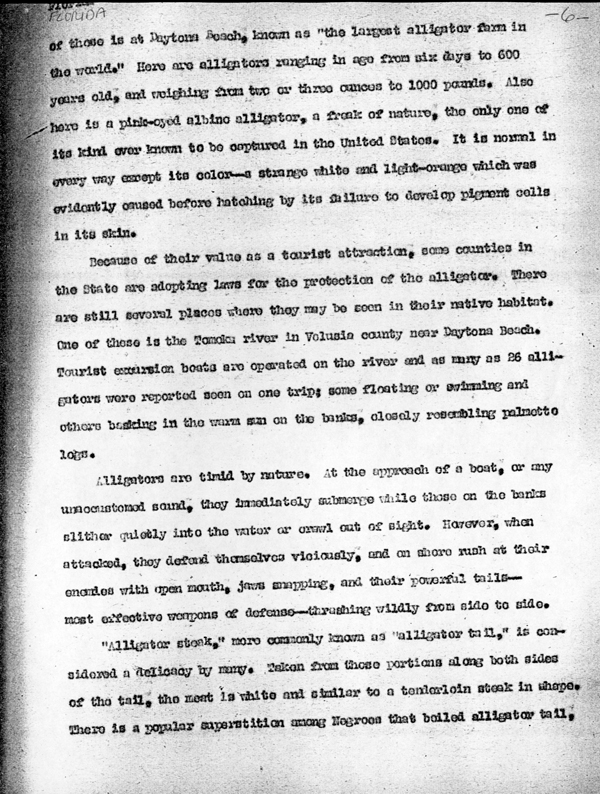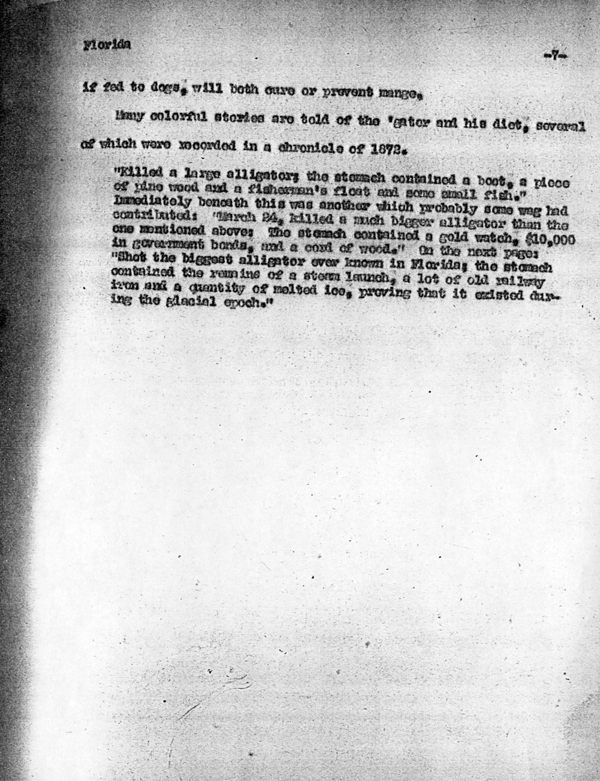Florida Memory is administered by the Florida Department of State, Division of Library and Information Services, Bureau of Archives and Records Management. The digitized records on Florida Memory come from the collections of the State Archives of Florida and the special collections of the State Library of Florida.

State Archives of Florida
- ArchivesFlorida.com
- State Archives Online Catalog
- ArchivesFlorida.com
- ArchivesFlorida.com
State Library of Florida
Related Sites
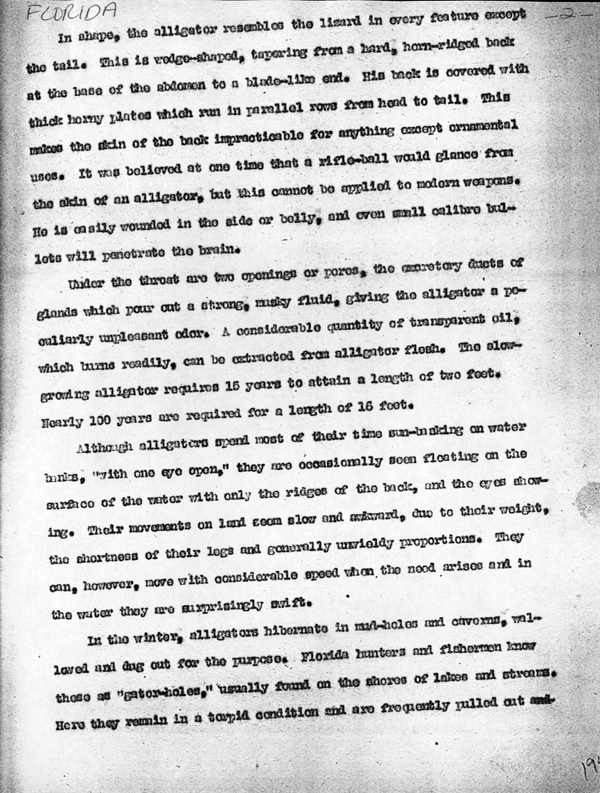
Description of previous item
Description of next item

Title
Published Date
In shape, the alligator resembles the lizard in every feature except the
tail. This is wedge-shaped, tapering from a hard, horn-ridged back at the
base of the abdomen to the blade-like end. His back is covered with thick
horny plates which run in parallel rows from head to tail. This makes the skin
of the back impracticable for anything except ornamental uses. It was
believed at one time that a rifle-ball would glance from the skin of an alligator,
but this cannot be applied to modern weapons. He is easily wounded in the
side or belly, and even small caliber bullets will penetrate the brain.
Under the throat are two openings or pores, the excretory ducts of
glands which pour out a strong, musky fluid, giving the alligator a peculiarly
unpleasant odor. A considerable quantity of transparent oil, which burns
readily, can be extracted from alligator flesh. The slow-growing alligator
requires 15 years to attain a length of two feet. Nearly 100 years are
required for a length of 16 feet.
Although alligators spend most of their time sun-basking on water
banks, "with one eye open," they are occasionally seen floating on the
surface of the water with only the ridge of the back, and the eyes showing.
Their movements on land seem slow and awkward, due to their weight, the
shortness of their legs and generally unwieldy proportions. They can,
however, move with considerable speed when the mood arises and in the
water they are surprisingly swift.
In the winter, alligators hibernate in mud-holes and caverns,
wallowed and dug out for the purpose. Florida hunters and fishermen know
those as "gator-holes," usually found on the shores of lakes and streams.
Here they remain in a torpid condition and are frequently pulled out and
Title
Subject
Description
Creator
Source
Date
Contributor
Format
Language
Type
Identifier
Published Date
Image URL
Thumbnail
Transcript Path
Image Path
Image Path - Large
Chicago Manual of Style
Francis, Mabel. Florida 'Gator. 1940. State Archives of Florida, Florida Memory. <https://www.floridamemory.com/items/show/181518>, accessed 14 December 2025.
MLA
Francis, Mabel. Florida 'Gator. 1940. State Archives of Florida, Florida Memory. Accessed 14 Dec. 2025.<https://www.floridamemory.com/items/show/181518>
AP Style Photo Citation
(State Archives of Florida/Francis)

 Listen: The FolkFolk Program
Listen: The FolkFolk Program